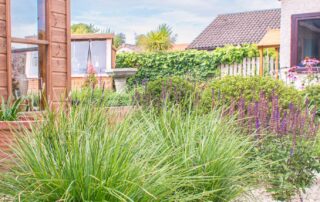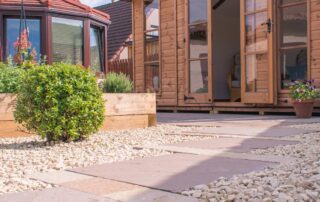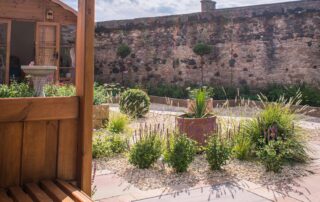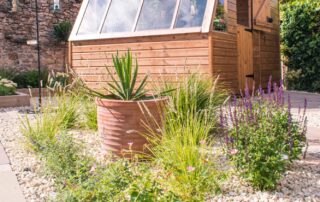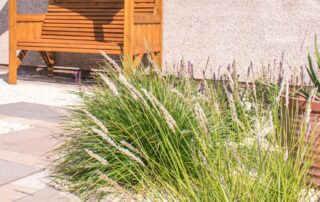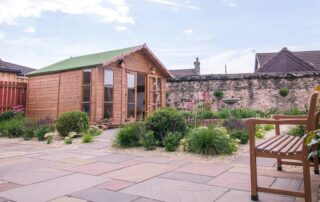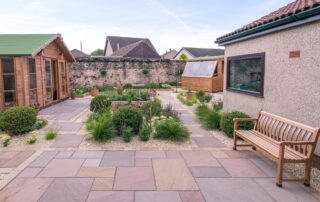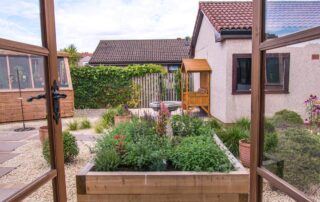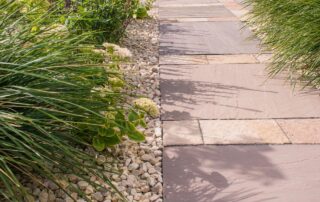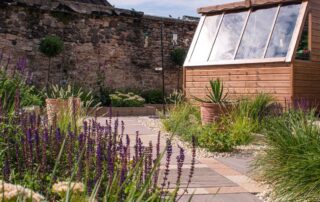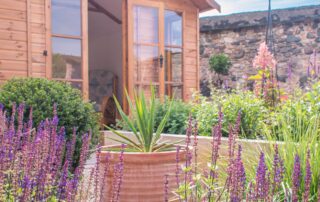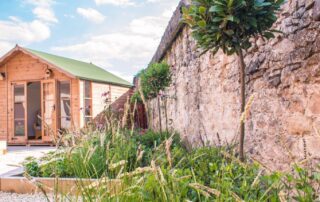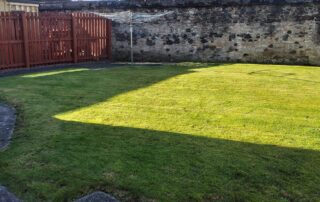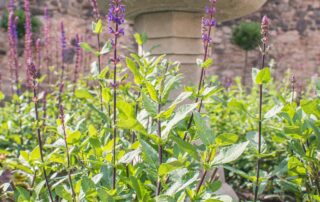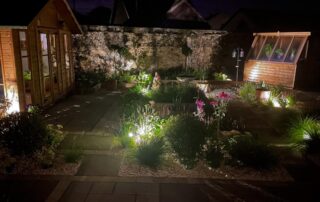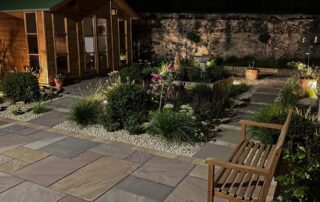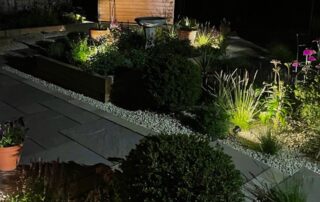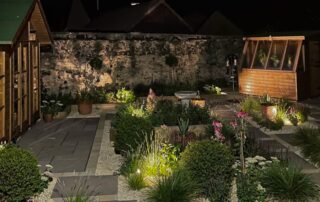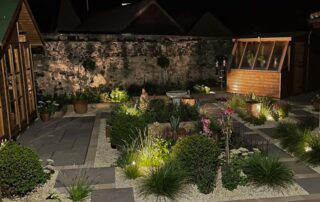Gravel Garden
NATURAL STONE AND GRAVEL PLANTING
Traditional garden design For this project, we were asked to design a traditional garden, with different seating areas, some spotlights and simple plants. The goal was to catch the light at different times of the day and to have a beautiful, calming view of nature from the living area and a new summer house. The garden was to be designed for the whole family to enjoy and to maintain easily. Materials The design revolved around a central part of the garden, where different zones were created and garden buildings were positioned. Different sections of the path (made of natural sandstone paving) were designed to connect the main property with the summer house, the potting shed and the seating area (with a wooden garden arbour seat).
In the middle of the garden, a big wooden planter was built which included a stone, classic bird – bath and also to break things up, terracotta pots were added around the garden.
To add some more visual interest and character to the garden, the sandstone paths leading to different garden zones were broken up with mixed block paving creating interesting patterns. Sections between the paths were filled in with gravel (Cotswold chipping). This incredible versatile material was a perfect choice for this traditional and low-maintenance design and brought a new colour and different texture to it.
Planting scheme attracting a variety of insects
The owners were happy to share their garden space with wild birds and insects, for which they required a habitat to suit them. We designed a simple planting scheme, with mixed colourful perennials, ornamental grass broken up with elegant Ilex topiary balls (different sizes). Small ornamental trees (Laurus nobilis) were added in the planters and along the old stone wall, to give an impression of height.
Sections of gravel were planted with airy types of grass like: Sesleria autumnalis, Deschampsia cespitosa ‘Goldtau’ and soft perennials like: Salvia nemorosa ‘Caradonna’, Echinacea purpurea, Nepeta racemosa ‘Walker’s Low and Anemone x hybrida Andrea Atkinson, to create the more naturalistic look. In addition to the above, a significant number of Sedum Spectabile ‘stardust’ was used as an excellent example of a late season nectar source for butterflies and bees.

